There are several breeds of chicken that lay blue eggs. The best-known of these breeds are the Cream Legbars, Ameraucanas, and Araucanas. Mixed breeds descended from any of these can also lay blue eggs.
What makes a chicken’s eggs different colors?
A hen’s breed and genetics will determine what color her eggs are. Egg color is a breed trait, so a hen belonging to a given breed will always lay eggs of a specific color. For example, a Leghorn hen will always lay white eggs, while the aforementioned Ameraucana produces blue eggs.
Chicken eggs always start out white. The ones that come in different colors are exposed to different pigments as they travel through the hen’s oviduct, a trip that takes around 26 hours. It will take 20 hours for the shell to completely form.
Blue eggs owe their color to a pigment called oocyan that permeates the eggshell so that both the inside and the outside are the same shade of blue.
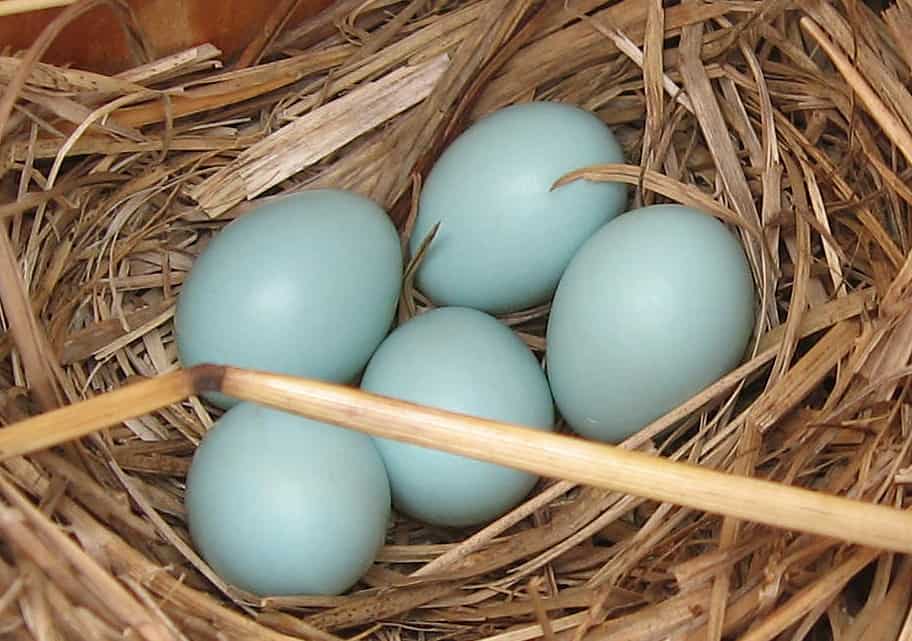
How many breeds of chickens are there?
Hundreds. Chickens are one of the most common domestic animals; as of 2023, there were 24.7 billion. Chickens are believed to have first been domesticated by the Indus Valley Culture or the ancient Chinese 6000 years ago. By 3000 BC, chickens had reached parts of Europe, and they reached the Middle East about a thousand years later.
The various types are divided into different categories. First off, chickens are categorized by size. Small breeds are called “bantams,” while big breeds are called “standards” or “large fowl.” Bantams are often described as being from ½ to 2/3 the size of large fowl.
Some bantams are breeds in their own right, while others are miniaturized versions of large fowl. Developed bantams are the descendants of crossbreeds that were mated to produce certain characteristics.
The different chicken breeds are then further subdivided by their place of origin and various physical characteristics.
Top 1. Araucana Chicken

| Information | Detail |
| Purpose | Ornamental
Egg-Laying |
| Egg color | Blue
Green Pinkish |
| Egg size | Large |
| Egg production per year | Around 150 |
| Broody | Yes |
| Heat tolerance | Yes |
| Cold tolerance | Yes |
| Comb type | Pea |
| Chicken skin color | Yellow |
| Life span | 6-8 years |
| Adult weight (hen) | 4-6 lbs |
| Adult weight (rooster) | 5-7 lbs |
| Backyard friendly | 5/5 |
The Araucana chicken comes from South America. It owes its name to the Araucana region in Chile which is believed to be its place of origin. The Spanish aviculturist Salvador Castelló visited Chile in 1914 and thought the chickens were a new species. It was later established that they were not. At the time, the Araucana chicken was the only chicken known to lay blue eggs.
Araucana chickens were brought to the UK in the early part of the 20th century. They made their way to Australia via New Zealand in the 1930s. During that decade, the British geneticist Reginald Punnett found that the gene for blue eggs was dominant over that of white eggs.
He also found that crossing Araucana chickens with chickens that laid brown eggs produced birds that would lay olive or green eggs.
Araucana chickens can be bantams or large fowl. They have tufts of feathers on their ears and are often rumpless or tailless. Araucanas have what is called a “pea comb,” which is a small and short comb with three rows of pea-like bumps.
The Entente Européenne d’Aviculture et de Cuniculture lists over 20 colors and patterns for the Araucana; the American Poultry Association recognizes seven plumage varieties for both large fowl and bantams. Large fowl can be white, silver duck wing, golden duck wing, black-breasted red, and black. Bantam can also be buff. Read more about Araucana Chickens.
Top 2. Cream Legbar
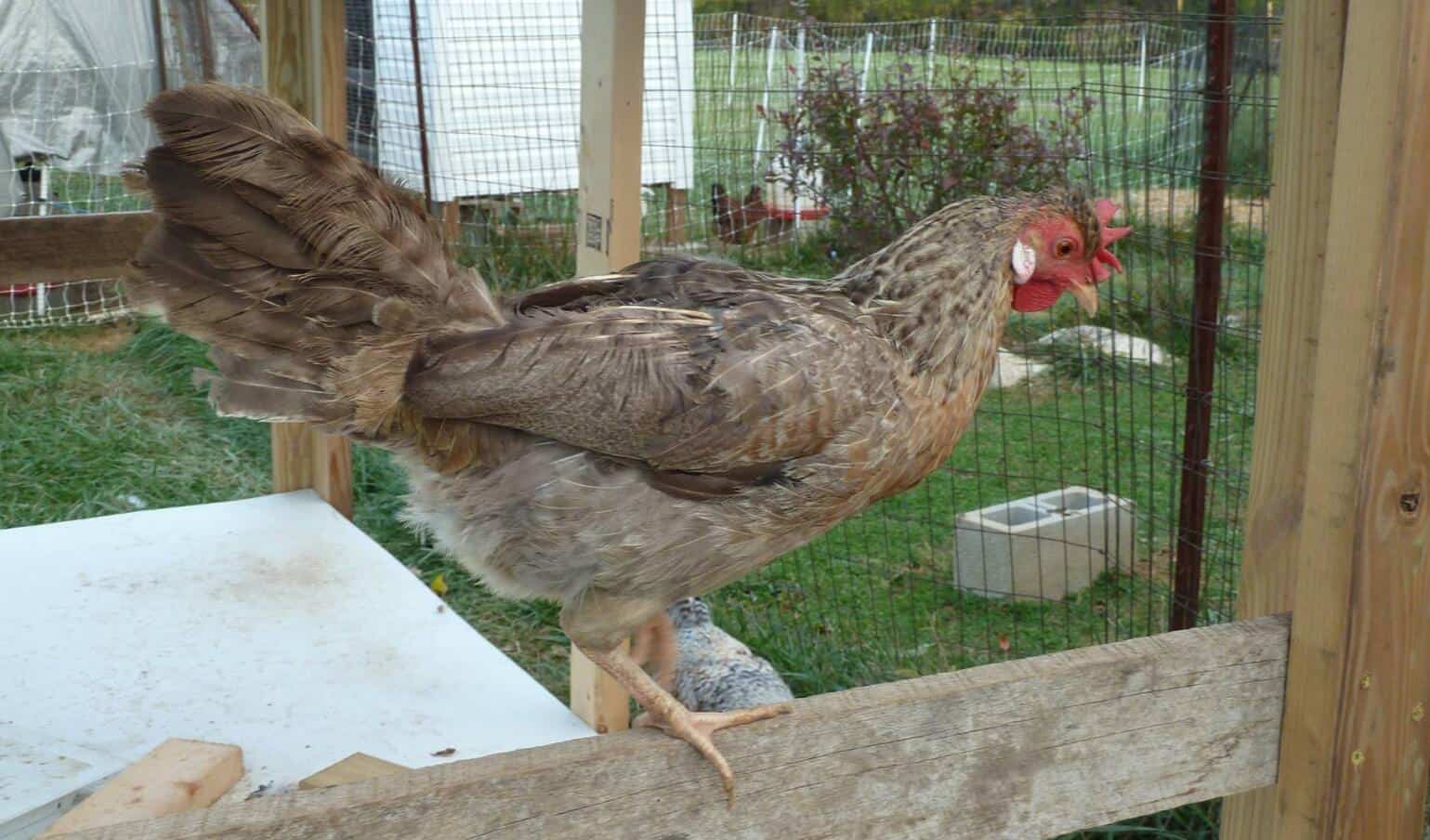
| Information | Detail |
| Purpose | Dual-purpose |
| Egg color | Blue
Blue-Green |
| Egg size | Medium to Large |
| Egg production per year | Around 180 to 200 |
| Broody | Yes |
| Heat tolerance | Yes |
| Cold tolerance | Yes |
| Comb type | Single |
| Chicken skin color | Yellow |
| Life span | 6-8 years |
| Adult weight (hen) | 5-6 lbs |
| Adult weight (rooster) | 6-7 lbs |
| Backyard friendly | 5/5 |
The Cream Legbar is a chicken developed in Great Britain. Its ancestors include Brown Leghorns, Barred Plymouth Rocks, Araucanas, and Gold Campines. The Cream Legbar inherited its blue eggs from Araucana.
During the 1930s, Michael Pease and Reginald Punnett at the Genetical Institute of Cambridge University decided to breed a chicken that could lay lots of eggs and produce “auto sex” chicks. Auto-sex chicks are those born with traits that enable people to distinguish males from females on the day that they hatch.
In Cream Legbars, male chicks have a light coat and a yellow spot on their head, while female chicks have stripes.
Adult Cream Legbars have slender builds. While both sexes have cream-colored necks and mainly gray bodies, the male has a cream-colored-saddle and gray chest, while the female has a salmon-colored chest.
Cream Legbars are described as having calm and friendly dispositions. They also enjoy roaming outside and are thus usually raised as free-range chickens.
The British Poultry Club accepted the Cream Legbar as a recognized breed in 1958. It is still quite rare in the United States and is not yet a recognized breed there.
In 2012, the Cream Legbar Club was established to encourage the keeping of Cream Legbars and eventually get the breed recognized by organizations like the American Poultry Association. Read more about Cream Legbar Chickens.
Top 3. Ameraucana
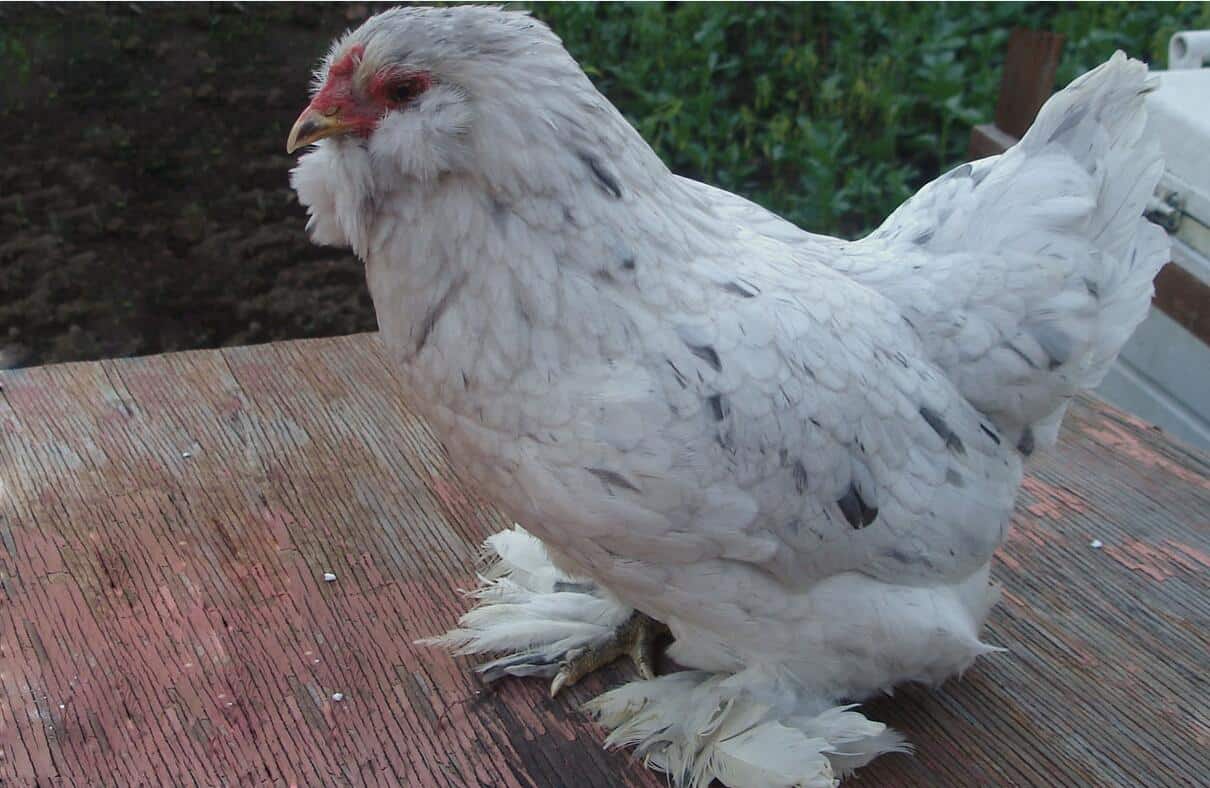
| Information | Detail |
| Purpose | Egg-Laying |
| Egg color | Light Blue
Sky Blue |
| Egg size | Medium to Large |
| Egg production per year | Around 150 to 200 |
| Broody | Yes |
| Heat tolerance | Yes |
| Cold tolerance | Yes |
| Comb type | Pea |
| Chicken skin color | Yellow |
| Life span | 6-8 years |
| Adult weight (hen) | 5-6.5 lbs |
| Adult weight (rooster) | 6.5-8.5 lbs |
| Backyard friendly | 5/5 |
The Ameraucana is an American breed; in fact, its name is a portmanteau of “American” and “Araucana.” It is thus a descendant of the Araucana, which has two lethal genes, one for taillessness and another for tufted ears. If a chick inherits either gene from both parents, it will die before hatching.
Mr. Keller of Pennsylvania’s Pratt Experimental Farm began working with Araucana chickens in 1925. He wanted to produce chickens that would lay the same pretty blue eggs as the Araucana but wouldn’t have its lethal genes. He thus crossed his Araucanas with chickens from several different breeds.
By the 1970s, chicken breeders had successfully developed a chicken that had blue eggs and tufted ears without the lethal gene, and a tail. The American Poultry Association recognized the Ameraucana as a legitimate breed in 1984.
The Ameraucana can be either a bantam or a large fowl, and the males are heavier than the females. In bantams, the females weigh between 24 and 26 ounces, while the males weigh between 26 and 30 ounces. In large fowl, the females weigh about 5.5 pounds, and the males weigh around 6.5 pounds.
The Ameraucana comes in eight colors: white, wheaten, silver, buff, brown-red, blue wheaten, blue and black. Their eyes are “reddish bay” which gives them a deceptively fierce appearance. Its pea comb and wattles are both red. They have long feathers around their face that give them “beards” and “muffs.”
The Ameraucana has a docile and friendly temperament, but it doesn’t like being picked up. It gets along well with both humans and fellow chickens. It is independent and enjoys free-ranging.
The Ameraucana has a life expectancy of about seven or eight years. Read more about Ameraucana Chickens.
Top 4. Easter Eggers
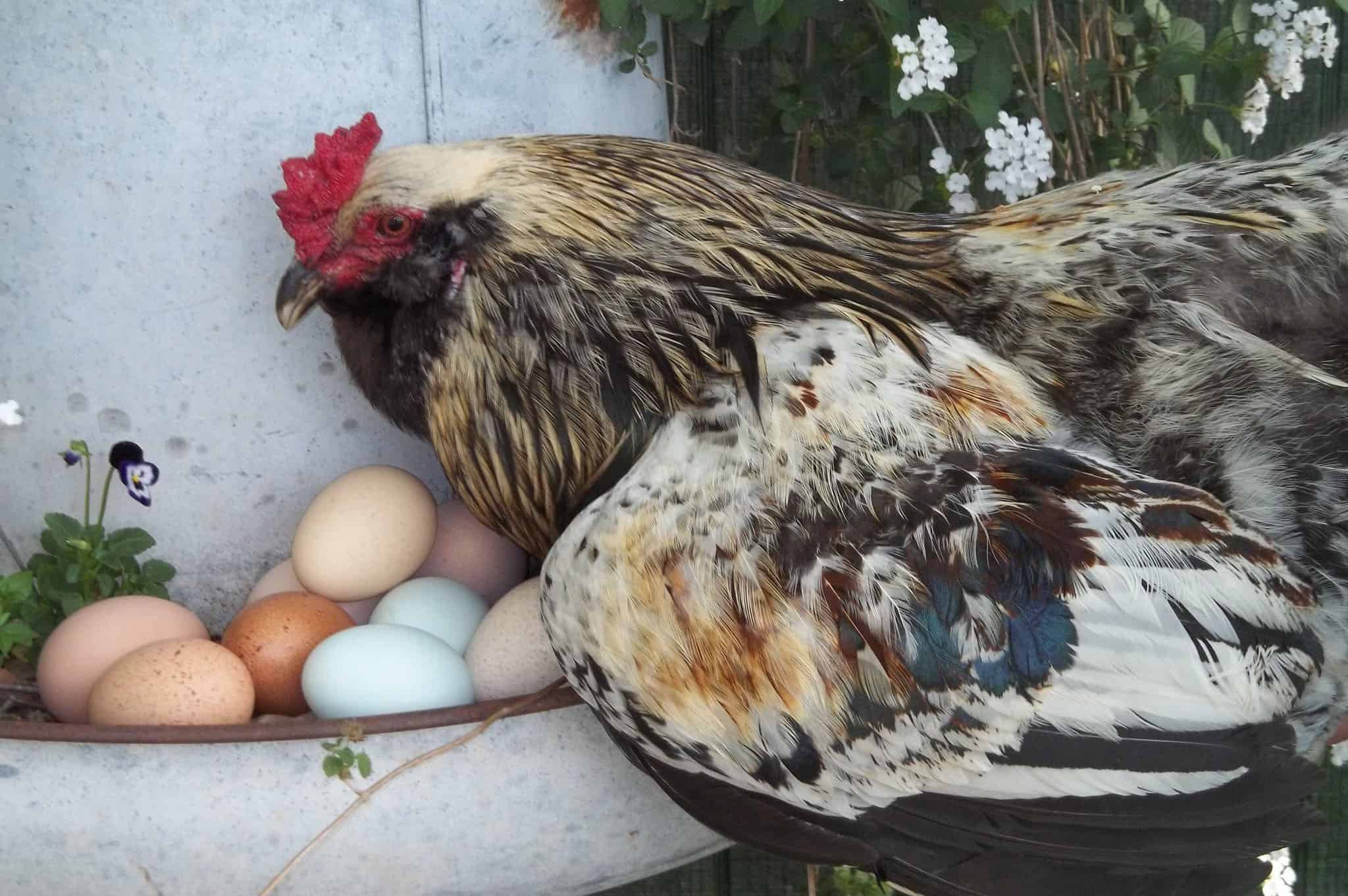
| Information | Detail |
| Purpose | Egg-Laying |
| Egg color | Blue
Green Pinkish |
| Egg size | Medium to Large |
| Egg production per year | Around 200 to 280 |
| Broody | Yes |
| Heat tolerance | Yes |
| Cold tolerance | Yes |
| Comb type | Pea
Single |
| Chicken skin color | Yellow |
| Life span | 6-8 years |
| Adult weight (hen) | 4-6 lbs |
| Adult weight (rooster) | 5-8 lbs |
| Backyard friendly | 5/5 |
Easter Eggers aren’t a specific breed; they are the chicken version of a “mutt” or “moggie.” They are sometimes called “Rainbow Layers,” because they can lay eggs of any color: pink, brown, green, or olive. The ones that lay blue eggs inherited the gene for blue eggs from an Araucana or Ameraucana ancestor.
This breed is also an excellent addition to any backyard farms and homesteads. It has a very friendly and docile nature, making it very easy to handle.
Read more about Easter Eggers.
Do any other chickens lay blue eggs?
There are a few other breeds that produce blue eggs.
China is home to two breeds, the Dongxiang, and the Lushi. The Dongxiang is known for also having black skin, muscles, and even organs. The Lushi is described as small, with the hens weighing under three pounds and the cocks weighing not quite found pounds. It is said to lay pink eggs as well as blue eggs, so it may be the Chinese version of an Easter Egger.
The Arkansas Blue is an experimental breed developed at the University of Arkansas by Dr. R. Keith Bramwell. It is said to be a cross between a white Leghorn and an Araucana. It resembles a Sumatra hen and has a pea comb and yellow legs.
Dr. Tom Whiting in Colorado developed a breed called the Whiting True Blue. He wanted a bird with superb hackle feathers that also produced blue eggs.
Hackle feathers, for the record, are the feathers around the neck. In roosters, the hackle feathers are long, and thin, and can be quite impressive. When a rooster gets ready to fight, it will raise its hackles to make itself look larger and more fearsome.
Do different colors affect an egg’s nutritional value?
People used to claim that blue eggs had more protein and less cholesterol than eggs of other colors. This is a myth. In terms of calories, proteins, and cholesterol, all eggs have the same nutritional value, no matter what color the shell is. The main thing that affects an egg’s nutritional value is its size: A larger egg, due to its increased content, will have more calories, protein, etc. than a smaller egg.”
Eggshell color also does not affect the taste or the appearance of the yolk. Yolk color is affected by the chicken’s diet. One Arizona farmer gave his chickens leftover red chile peppers, and they produced eggs with yolks the color of sunsets. Chickens that eat a lot of corn, by contrast, tend to lay eggs with yellow yolks.
Summary
Chickens that lay blue eggs are so far relatively rare, and the purebreds are comparatively expensive. White and brown eggs are the most common and least expensive, which is why these colors are the ones found in supermarkets. People who want to try blue eggs may want to visit a farmer’s market or poultry show.

Joseph Hudson has been raising chickens for over 15 years. In 2018, he completed the Agriculture & Natural Resources program at Mt. San Antonio College. He currently raises over 1400 chickens on his 7.5-hectare farm. He keeps sharing his experience on raising healthy and happy chickens on Chicken Scratch The Foundry.
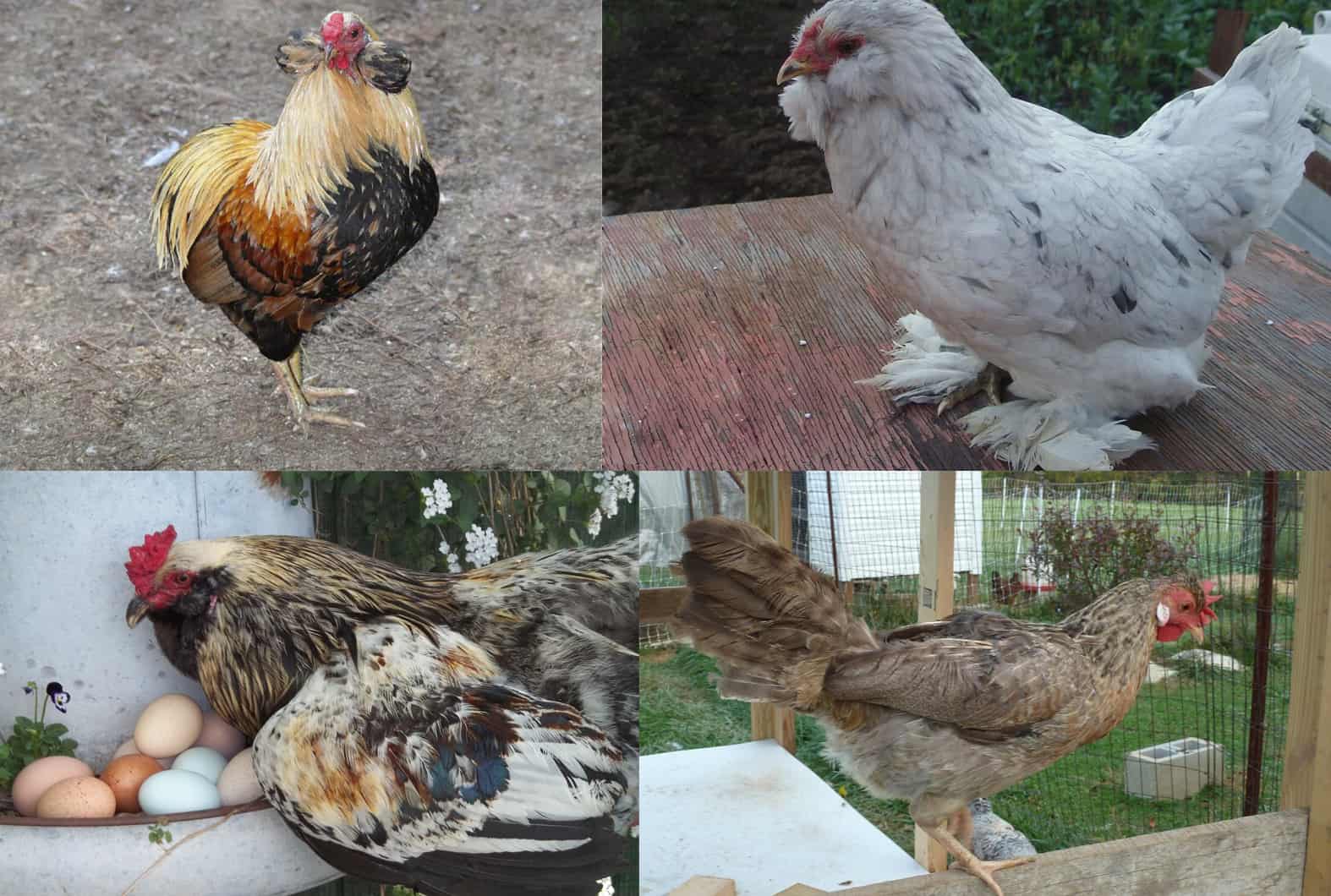







Hello, I found reading about chickens very interesting. I’d like to know why people say blue eggs have half the cholesterol than other eggs. I have a friend that has an anacana pure breed and says it came from Spain, lays blue eggs and swears that they are half the cholesterol. So where did that idea come from?
Thanks for your time. Peace
Leghorns lay white eggs and a blue ameraucana egg is blue on the inside too unlike brown eggs